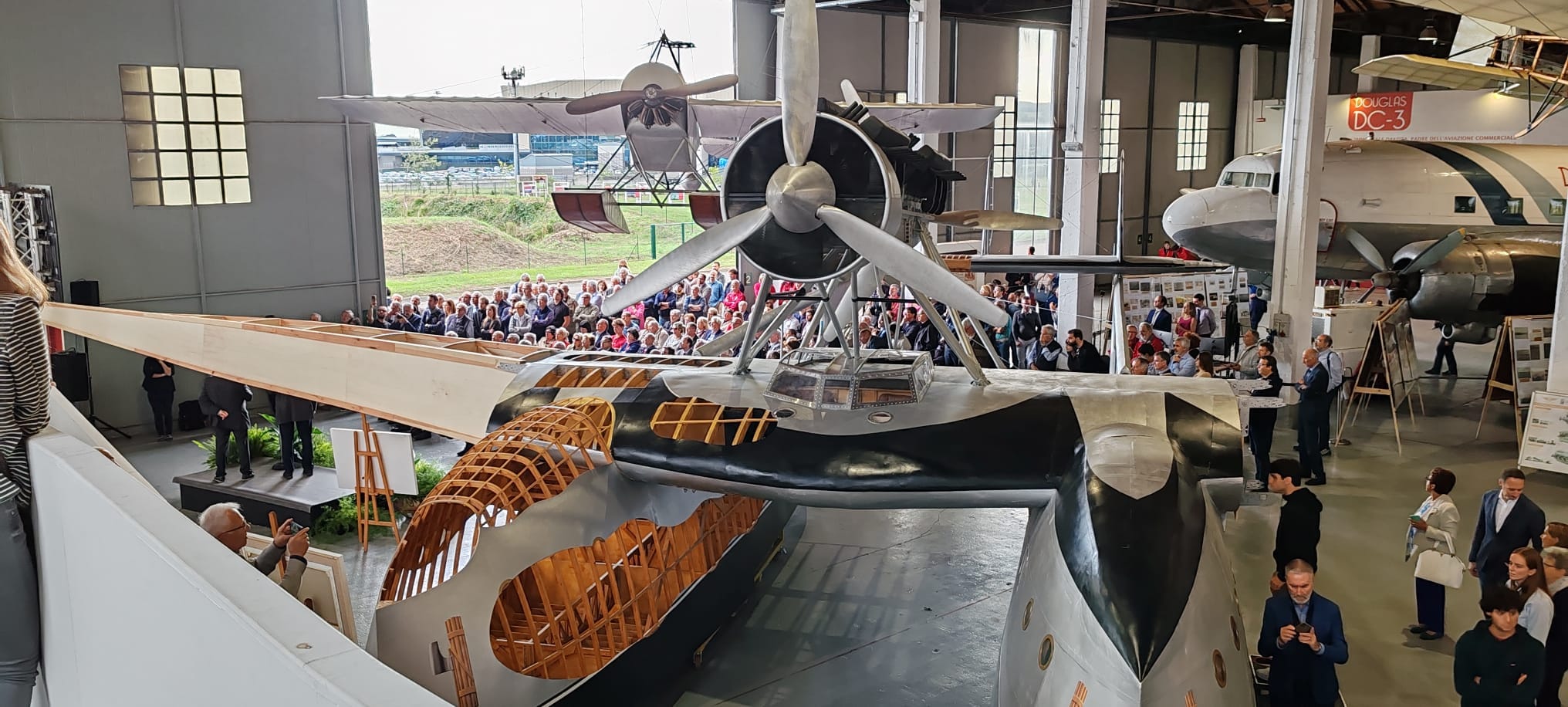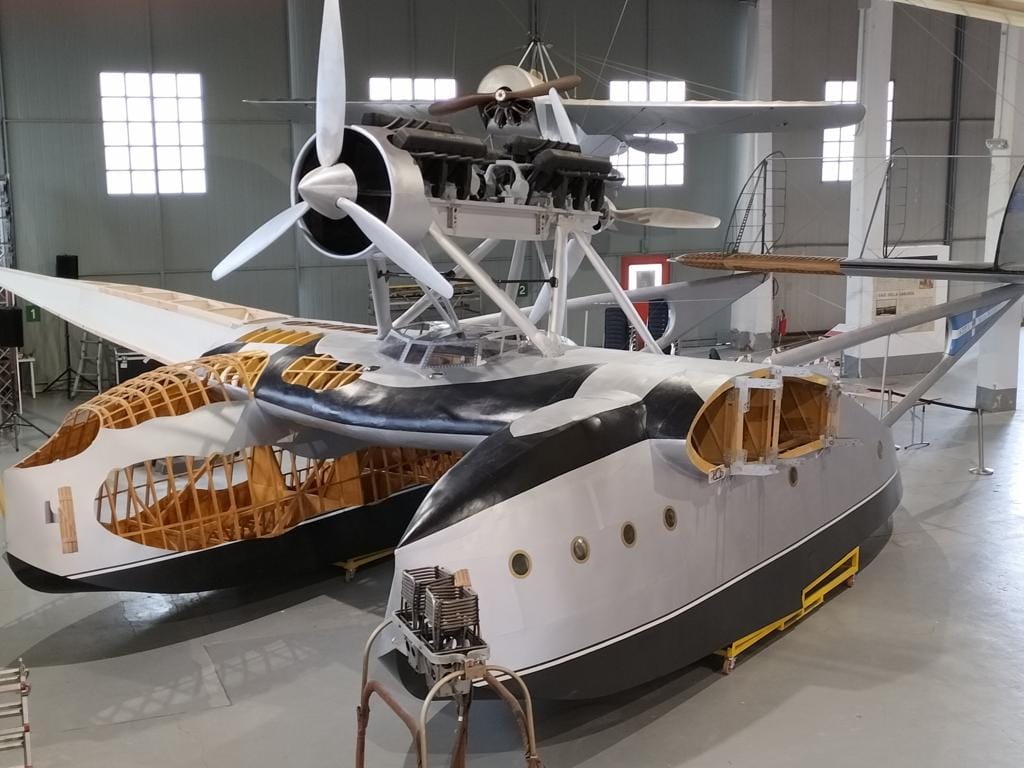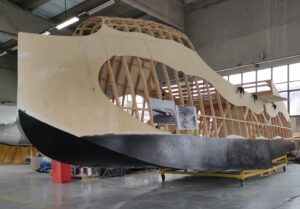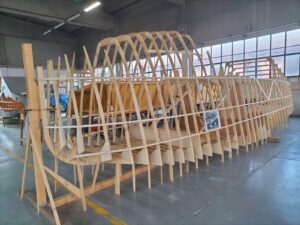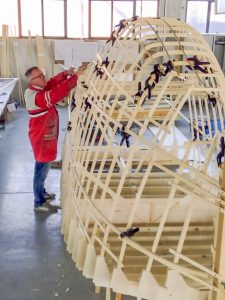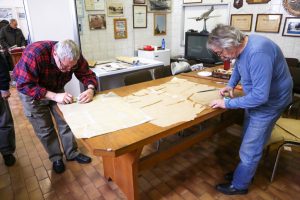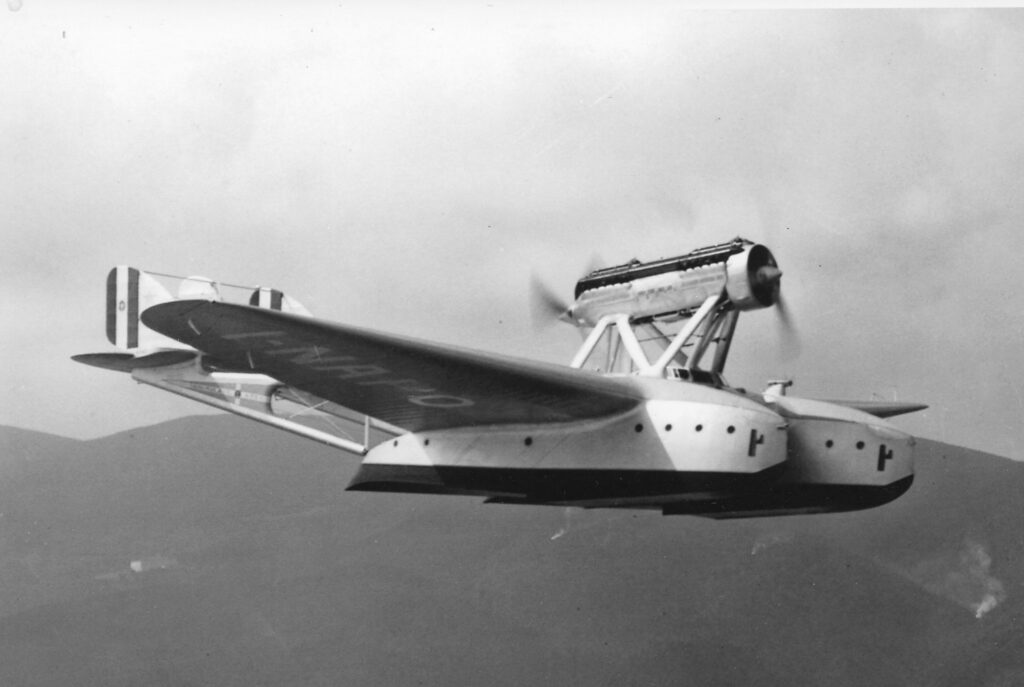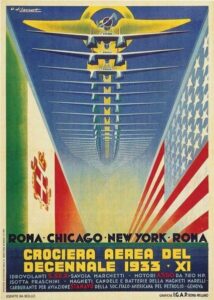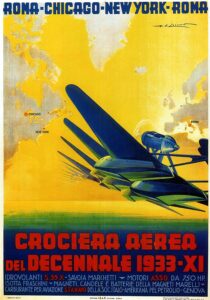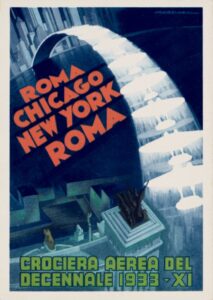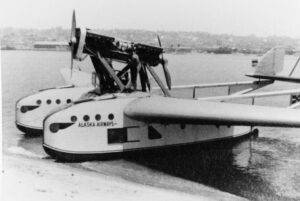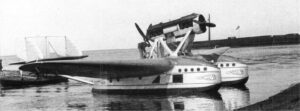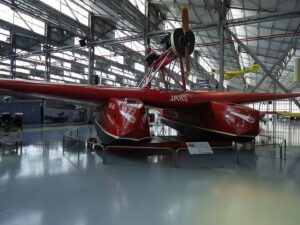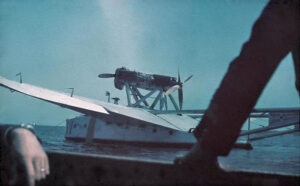On Saturday, September 23, at the Volandia Museum, Milan, Italy, the Savoia Marchetti Historical Group unveiled the full size reproduction of the S.55X seaplane used by Italo Balbo in his famous cruise. In 1933, Balbo led a formation of 24 of these flying boats from Orbetello, Italy to Chicago to participate in the Chicago World Fair named “A Century of Progress”, celebrating the centenary of the founding of the city of Illinois.
This static replica was built over the course of seven years in a total of approximately eight thousand person-hours utilizing the original drawings of Alessandro Marchetti. Thanks to the dedication and passion of a core of ten passionate, former workers of Siai Marchetti of Sesto Calende, and some Volandia volunteers, also supported by important local industries, the museum now exhibits the most iconic Italian aircraft of the 1930s, the protagonist of epic undertakings such as the Mediterranean and Atlantic cruises. (Only one earlier type exists, named Jahú in Brazil – we cover it here.)
If the S.55X’s original story is compelling, the same can also be said of the story of the enterprise that took its first steps in 2015 and on whose success very few would bet.
In 2015, on the occasion of the centenary of SIAI Marchetti, a group of aviation enthusiasts from the Savoia Marchetti Historical Group, (SMHG), supported by Volandia and its volunteers, as well as the SIAI Senior Workers Group and local aeronautical industries, began this ambitious project. The project was to commemorate the extraordinary Italian technological, entrepreneurial, and organizational capabilities of the 1930s, and to pay homage by creating an modern recreation to serve as an example of one of the most glorious Italian industries of the past, and one of the most fascinating in the history of world aviation.
The first, research phase involved the collection of documentation to ensure accuracy in the construction of the replica with compiling drawings and technical documentation. The creation of the replica required considerable effort, especially for the construction of the two hulls, which are of considerable size (almost 10 meters in length, and more than 2 meters in width and height) and weight (over 500 kg each).
Now complete, this extraordinary aircraft will remain on display in Volandia, at Milan’s Malpensa airport, where it was built, to demonstrate the value, history, and foresight of the aeronautical industries of the time which were developed there.
The Savoia Marchetti S.55 was conceived by Alessandro Marchetti (1884-1966), who was a brilliant designer at SIAI, Sesto Calende. It was created in response to a competition announced in 1923 by the Italian Regia Aeronautica (Italian Royal Air Force) for a long-range, over-water torpedo bomber. At that time, it was indeed a very innovative concept, consisting of a twin-engine catamaran style airframe with a monoplane internally cantilevered wing – in an era when competing designs still used the traditional single hull, biplane formula. This configuration had many advantages, as the central position of the torpedo, in addition to being on the center of gravity, also simplified loading with a boat positioned between the two hulls. The position of the engines, mounted on struts above the wing, also offered advantages, keeping them away from the water during take-off and alighting. Of wooden construction, the flying boat was also easily dismantled into major component sections to facilitate transport or maintenance.
This modular construction reflected the modernity of its conception, in line with the most innovative techniques emerging at the time in other industries. Furthermore, the wing was made watertight, and was thus practically unsinkable in the event of ditching in rough seas.
This innovation meant the design was not immediately appreciated by the military, perplexed by such a revolutionary project, so SIAI had to find its first customers in the civil arena. The spacious hull interiors enabled the type’s use on passenger services on Mediterranean routes to the Middle East and North Africa from Italy. Subsequently, after eliminating teething problems, the new seaplane was equipped with more powerful engines and was adopted by the Regia Aeronautica, where it constituted the standard equipment of the maritime bombing units from 1929, remaining in service to 1937.
But the true fame of the S.55 – considered the most famous Italian aircraft in the world between the two wars – is not due to its service as a torpedo bomber or as an airliner, but rather to the great ‘raids’ or long distance cruses carried out between 1927 and 1933.
First came the solo Atlantic crossings of Francesco de Pinedo and Juan de Barros in 1927, followed by the great formation cruises of Italo Balbo across the Mediterranean (in 1928-29) and then across the Atlantic to the Americas in 1930 and 1933. In America, the arrival of a large formation of seaplanes from overseas aroused, in addition to the enthusiasm of the Italian emigrant communities, a huge reaction – arguably comparable only to the landing of man on the moon in 1969. Thanks to its success, the S.55 also had good export success, obtaining orders in Brazil, Romania, the United States, and the Soviet Union.







